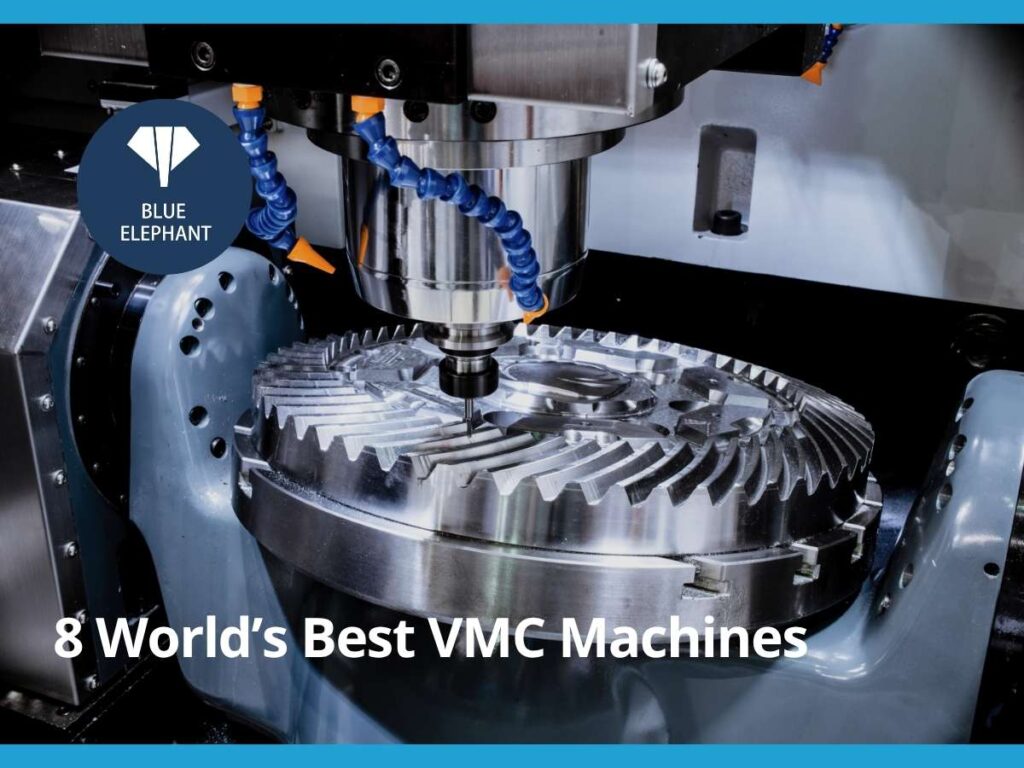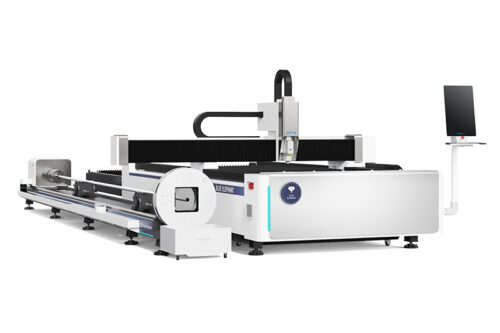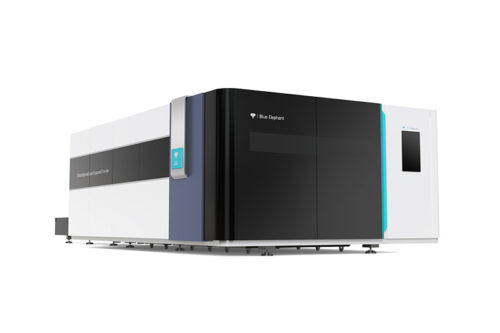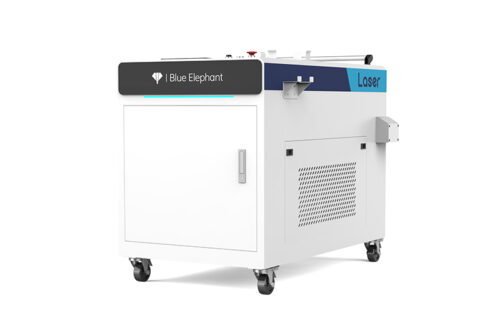I remember the first time I saw a Vertical Machining Center (VMC) in action. The precision, speed, and efficiency were nothing short of mesmerizing.
At that moment, I realized how critical these machines are to modern manufacturing.
If you’re in the market for a VMC, you know the stakes. The right machine can optimize production, improve accuracy, and cut costs. The wrong one? A costly mistake.
That’s why this guide exists. I’ve done the research, analyzed expert reviews, and compared top-tier machines so you don’t have to. This isn’t just another list—it’s a roadmap to making the right investment.
Here’s what you’ll find:
- A deep dive into the 8 best VMC machines in the world.
- Key features, strengths, and use cases for each machine.
- Insights to help you choose the best fit for your business.
So, let’s get started!
Quick Comparison Chart
Modern manufacturing demands more than just powerful machines—it requires software that matches precision, efficiency, and ease of use. Below is a side-by-side comparison of the control systems featured in the top VMC and laser machines from our review.
| Machine | Control System | Interface Type | User-Friendliness | Connectivity | Customization | Automation Support | Industry 4.0 Ready |
| Haas VF-2TR | Haas Next-Gen Control | Touchscreen + Buttons | High | Wi-Fi, Ethernet | Moderate | Medium | Yes |
| Blue Elephant 1325 ATC Router | Syntec Controller | Keypad + LCD | Medium | USB, Ethernet | High | Medium | No |
| Makino PS Series | Makino Pro 6 | Touchscreen | High | Ethernet | High | Advanced | Yes |
| DMG MORI NVX Series | CELOS + MAPPS | Touchscreen | High | Ethernet, IoT Cloud | High | Advanced | Yes |
| Okuma GENOS M560-V | Okuma OSP-P300M | Touchscreen | High | Ethernet, USB | High | Advanced | Yes |
| TRUMPF TruLaser 5030 Fiber | TRUMPF Touchpoint HMI | Touchscreen | Very High | Ethernet, SmartLink | Medium | High | Yes |
| GROB-WERKE G350 | Siemens 840D / Heidenhain | Touchscreen + Dials | High | Ethernet | High | Advanced | Yes |
As you can see, these systems offer a range of control features, some focused on ease of use, others on deep customization and automation. Choosing the right one depends on your production goals and operator experience.
1. Yamazaki Mazak’s VCN Series
The first time I watched a laser cutter at work—the beam slicing through the material with absolute precision. It was effortless, powerful, and incredibly precise. At that moment, I knew that the right machine could transform the way businesses create, prototype, and manufacture.
If you’re looking for a fast, reliable, and precise laser cutter for your operation, the Glowforge Plus 3D Laser Printer is worth your attention. Let’s break it down.
Specifications
- Laser Power: 40W CO2 laser
- Cutting Area: 19.5” x 11” (495mm x 279mm)
- Material Compatibility: Wood, acrylic, leather, fabric, paper, and certain metals (for engraving)
- Cooling System: Air-cooled, closed-loop cooling
- Connectivity: Wi-Fi, cloud-based software
- Camera Precision: Built-in camera for material alignment
- Speed: Faster than the Glowforge Basic, but not as fast as the Pro model
Key Features
- Precision Cutting & Engraving: The Glowforge Plus offers razor-sharp accuracy, cutting through a variety of materials with smooth, clean edges.
- Smart Autofocus & Camera Alignment: Say goodbye to manual adjustments. The built-in camera and autofocus system ensure perfect material placement every time, reducing errors and waste.
- Cloud-Based Software: No need for expensive, complicated software. The Glowforge operates on an intuitive, web-based platform that allows you to design, upload, and print from anywhere.
- Versatile Material Compatibility: Whether you’re working with wood, acrylic, leather, fabric, or metal (engraving only), the Glowforge Plus can handle a wide range of projects with industrial-grade precision.
- Plug-And-Play Simplicity: Forget complicated setups. This machine is designed for ease of use, so your team can start cutting and engraving within minutes.
Pros & Cons
Pros:
- Superior Cutting & Engraving Precision: The Glowforge Plus ensures clean, accurate cuts across multiple materials, making it perfect for detailed, high-quality production.
- User-Friendly & Cloud-Connected: No need for complicated software installations. The Wi-Fi-enabled, cloud-based interface allows for seamless operation and easy team collaboration.
- Excellent Build Quality & Durability: The robust design ensures long-term reliability, making it a smart investment for any business looking to scale production.
Cons:
- Limited Cutting Depth: While powerful, the 40W laser struggles with thicker materials compared to industrial-grade alternatives.
- Cloud Dependency: Since the software is cloud-based, an internet connection is required for operation, which may not be ideal for every business setup.
- Higher Price Point: The Glowforge Plus costs more than entry-level laser cutters, but it offers far superior performance and longevity.

2. Haas Automation’s VF-2TR
The Haas VF-2TR is a game-changer in 5-axis machining. Engineered for precision, speed, and reliability, this Vertical Machining Center (VMC) is built for manufacturers who demand the best. With an integrated trunnion rotary table, it delivers full 5-axis motion, making it ideal for complex multi-sided machining with minimal setups.
Specifications
- Travel (X, Y, Z): 30″ x 16″ x 20″
- Spindle Speed: 12,000 RPM (optional 15,000 RPM)
- Spindle Power: 30 HP (22.4 kW)
- Tool Capacity: 30+1 tool changer
- Rotary Table: Integrated dual-axis trunnion for 5-axis machining
- Control System: Haas Next-Gen Control with Wi-Fi and Ethernet connectivity
Key Features
- Full 5-Axis Machining: The built-in trunnion table enables precise multi-sided machining, reducing setups and increasing efficiency.
- High-Speed Spindle: The 12,000 RPM spindle (upgradable to 15,000 RPM) ensures smooth, precise cuts across various materials.
- Rigid Construction: Heavy-duty cast-iron build reduces vibration and enhances cutting accuracy.
- Advanced Haas Control System: Intuitive programming with built-in Wi-Fi and Ethernet for seamless connectivity.
- Large Tool Capacity: The 30+1 automatic tool changer minimizes downtime and maximizes productivity.
Pros & Cons
Pros:
- Unmatched 5-Axis Versatility: Perfect for complex geometries and multi-sided machining.
- Powerful and Fast: High spindle speed and rapid tool changes improve workflow efficiency.
- User-Friendly Control System: The Haas Next-Gen Control is easy to use and fully integrated with modern software solutions.
Cons:
- Higher Learning Curve: Advanced 5-axis machining requires specialized programming knowledge.
- Significant Investment: Premium capabilities come with a higher price tag compared to entry-level VMCs.
- Footprint: Requires more shop floor space than standard 3-axis machines.
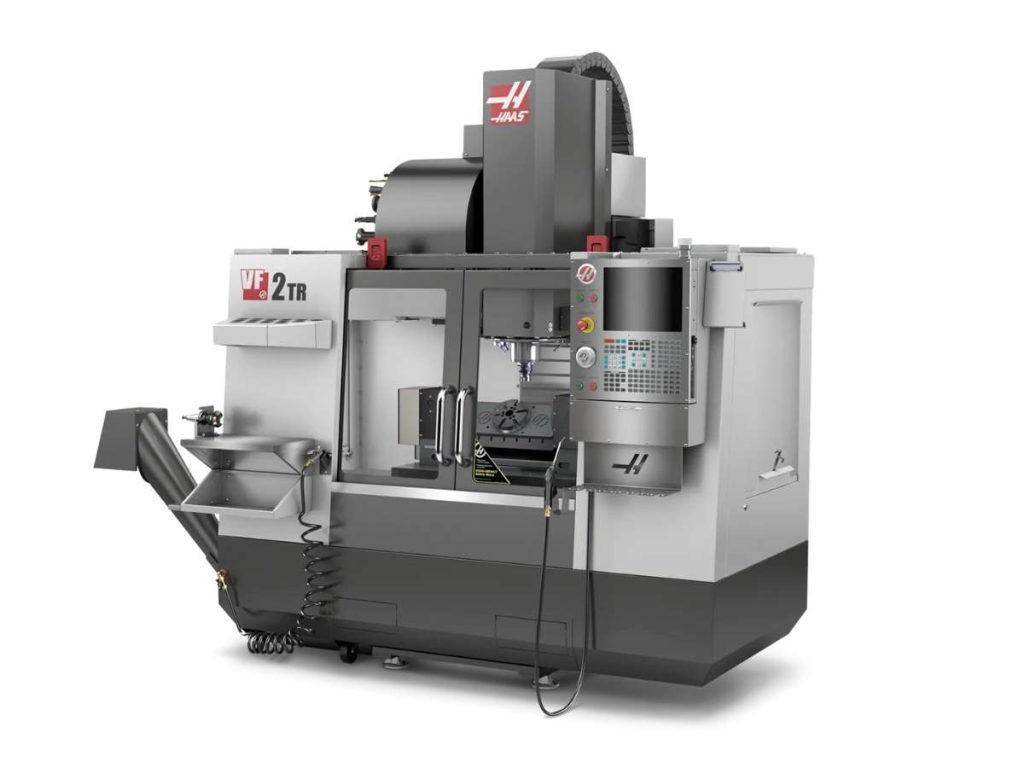
3. Blue Elephant CNC’s 1325 ATC CNC Router
The Blue Elephant 1325 ATC CNC Router is a powerhouse designed for high-efficiency machining. With its Automatic Tool Changer (ATC), precision cutting, and robust construction, this machine is built for businesses looking to optimize production and minimize downtime.
Whether you’re in woodworking, sign-making, or furniture manufacturing, this CNC router is engineered to handle demanding workloads with unmatched accuracy and speed.
Specifications
- Working Area: 1300mm x 2500mm x 200mm
- Spindle Power: 9.0 kW Air Cooling ATC Spindle
- Tool Change System: Linear Automatic Tool Changer with 8-12 tools
- Control System: Syntec Control System for precision programming
- Table Structure: Vacuum table with T-slot clamping system
- Transmission: Heavy-duty rack and pinion drive for superior stability
Key Features
- Automatic Tool Changer (ATC): Streamlines production with fast, efficient tool swaps, reducing downtime and increasing throughput.
- High-Powered Spindle: The 9.0 kW spindle ensures smooth, consistent cutting across a variety of materials.
- Vacuum Table & T-Slot System: Securely holds materials in place for precise, high-quality cuts.
- Heavy-Duty Frame: Engineered for stability and durability, minimizing vibrations and improving accuracy.
- User-Friendly Syntec Control System: Advanced, yet intuitive controls allow for seamless operation and integration with existing workflows.
Pros & Cons
Pros:
- Unmatched Speed & Efficiency: Automatic tool changes significantly reduce setup time.
- Versatile Application: Handles wood, plastic, composites, and even soft metals with precision.
- Robust & Reliable: Durable frame and precision engineering ensure long-term performance.
Cons:
- Larger Footprint: Requires significant shop space compared to smaller routers.
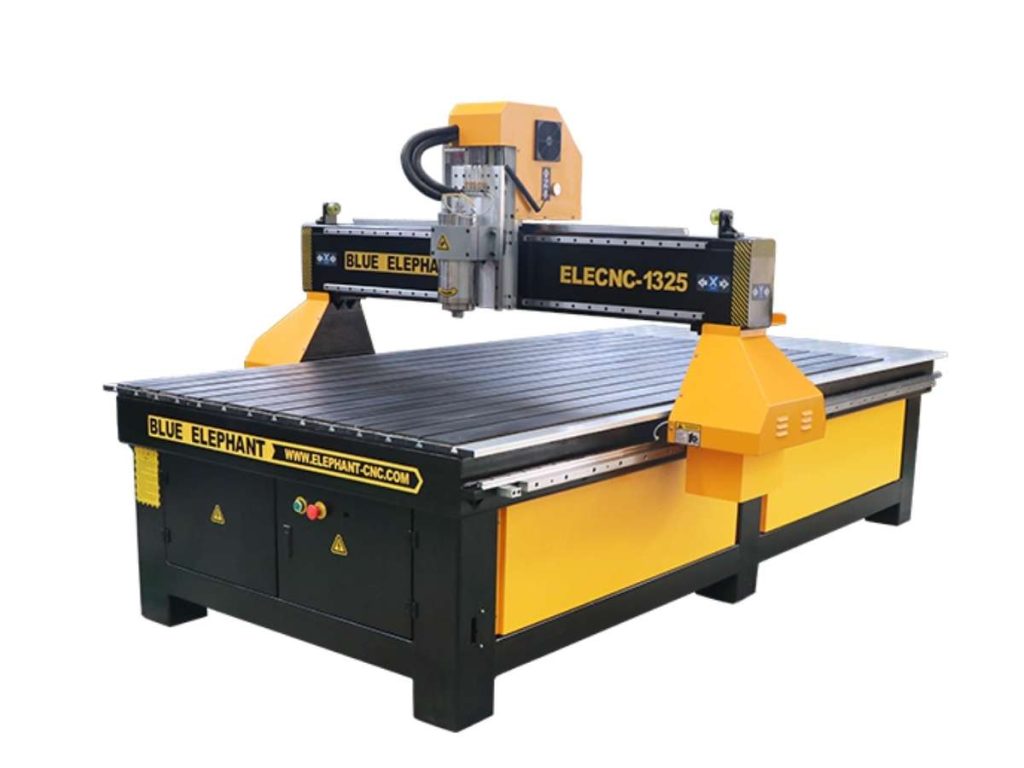
4. Makino’s PS Series
I still remember the first time I operated a Makino PS Series machine. The smoothness of the motion, the way it effortlessly handled high-speed cutting—it was clear this wasn’t just another machining center. This was next-level performance.
Designed for uncompromising precision and efficiency, the Makino PS Series is built for businesses that demand speed, accuracy, and reliability in their machining operations. This series delivers exceptional results with zero compromises.
Specifications
- Travel (X, Y, Z): Up to 1020mm x 510mm x 460mm
- Spindle Speed: 14,000 RPM (upgradable to 20,000 RPM)
- Spindle Power: 20 HP (15 kW)
- Tool Capacity: 30 to 60 tools, depending on model
- Rapid Traverse Speed: 48 m/min
- Control System: Makino Professional 6 CNC
Key Features
- High-Speed Spindle: The 14,000 RPM spindle (with a 20,000 RPM upgrade option) allows for smooth, high-precision machining even on the toughest materials.
- Rigid Machine Structure: Engineered with a heavy-duty cast-iron frame, reducing vibration and increasing cutting accuracy.
- Advanced Cooling System: Keeps temperatures stable, maintaining consistency and prolonging tool life.
- User-Friendly CNC Control: The Makino Professional 6 Control offers intuitive operation, making complex programming easier.
- Fast Tool Changes & Rapid Movement: A high-speed 30-tool ATC and fast-axis movement allow for unmatched cycle time efficiency.
Pros & Cons
Pros:
- Exceptional Precision & Speed: Perfect for high-volume production and detailed mold work.
- Reliable & Durable: Designed for long-term industrial use with minimal downtime.
- Intelligent CNC Control: Advanced yet easy-to-use controls improve workflow efficiency.
Cons:
- Higher Initial Cost: Premium performance comes at a higher investment.
- Steep Learning Curve: Advanced features require some experience to maximize output.
- Large Footprint: Requires ample shop space due to its robust construction.
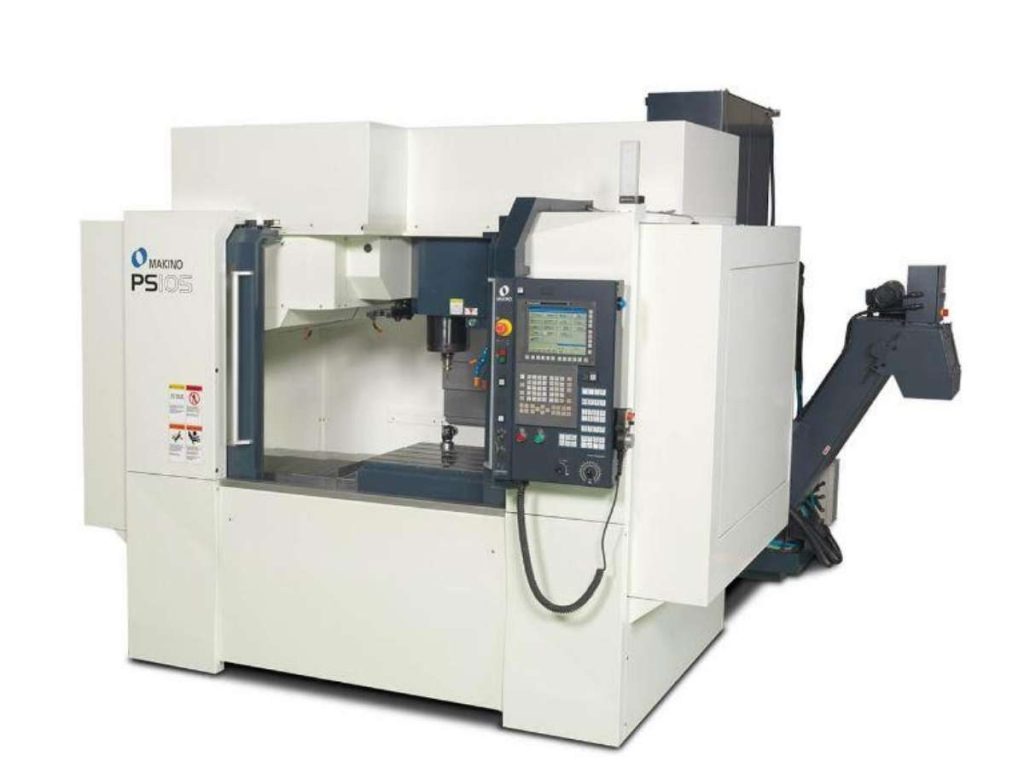
5. DMG MORI’s NVX Series
When I first ran a job on a DMG MORI NVX Series machine, I was blown away. The smoothness, the pinpoint accuracy, the silent power—this wasn’t just machining. It was engineering perfection in motion.
Designed for extreme precision and efficiency, the NVX Series is a top-tier vertical machining center that outperforms standard machines in rigidity, accuracy, and speed. It’s built to dominate industries where micron-level precision and surface finish are non-negotiable.
Specifications
- Travel (X, Y, Z): Up to 800mm x 530mm x 510mm
- Spindle Speed: 15,000 RPM (optional 20,000 RPM)
- Spindle Power: 30 HP (22 kW)
- Tool Capacity: 30+ tools
- Rapid Traverse Speed: 42 m/min
- Control System: DMG MORI CELOS with MAPPS
Key Features
- Thermal Stability & Accuracy: The NVX Series features high-precision thermal compensation, eliminating thermal deformation and ensuring consistent accuracy over long production cycles.
- High-Rigidity Construction: Built with box-in-box design for superior vibration damping and cutting stability.
- Advanced Spindle Performance: The direct-drive spindle allows for ultra-smooth cutting at speeds of up to 20,000 RPM.
- CELOS Control System: A smart, intuitive interface that integrates with Industry 4.0 technology, optimizing workflow automation.
- Fast & Efficient Tool Changer: Reduces non-cutting time, improving operational speed and efficiency.
Pros & Cons
Pros:
- Industry-Leading Precision: Ideal for aerospace, medical, and high-accuracy manufacturing.
- Intelligent Automation & Control: CELOS system improves efficiency and reduces operator workload.
- Superior Durability & Longevity: Built with premium components to withstand heavy-duty industrial use.
Cons:
- Premium Price Tag: High-end performance means a higher investment upfront.
- Requires Skilled Operators: Advanced technology requires proper training to maximize potential.
- Shop Space Considerations: Requires a dedicated, well-planned space for optimal performance.
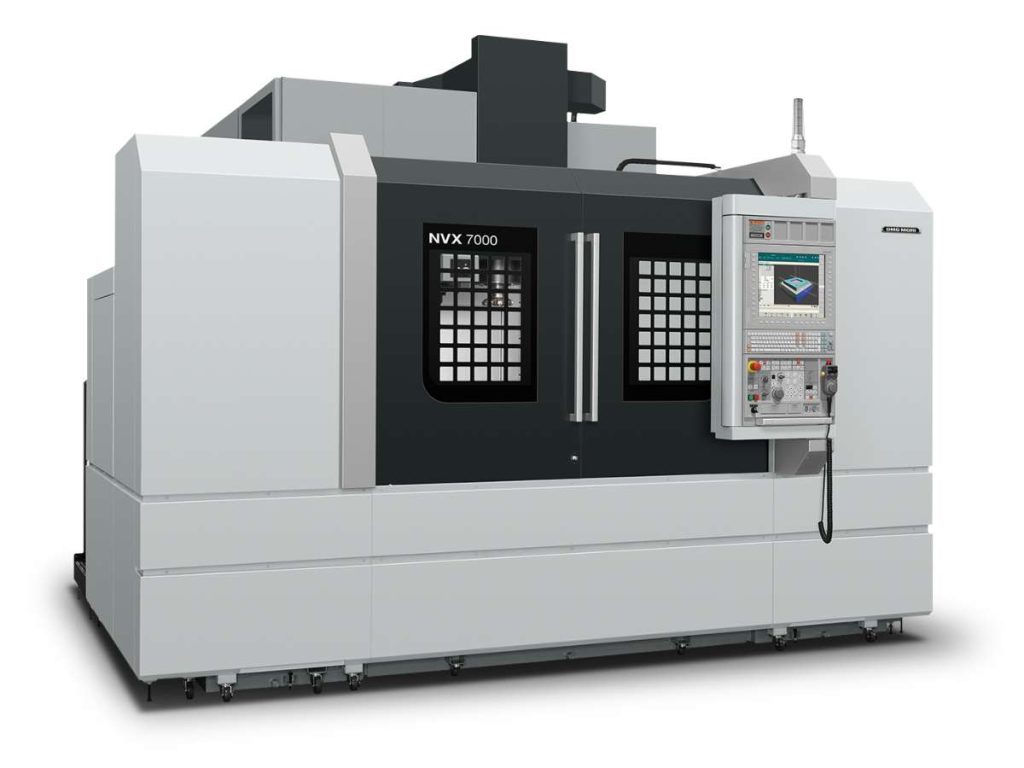
6. Okuma’s GENOS M560-V
The Okuma GENOS M560-V is designed for manufacturers who refuse to compromise on precision, durability, and performance. Built with thermally stable construction and high-speed capabilities, this vertical machining center is engineered for high-performance milling in aerospace, automotive, and industrial applications.
Specifications
- Travel (X, Y, Z): 1,050mm x 560mm x 460mm
- Spindle Speed: 15,000 RPM (optional 20,000 RPM)
- Spindle Power: 30 HP (22.4 kW)
- Tool Capacity: 32 tools (expandable)
- Rapid Traverse Speed: 40 m/min
- Control System: Okuma OSP-P300M
Key Features
- Thermo-Friendly Concept: Built with advanced thermal stability to eliminate accuracy loss due to temperature fluctuations.
- High-Speed, High-Power Spindle: A 15,000 RPM spindle allows for aggressive cutting while maintaining flawless precision.
- Heavy-Duty Cast-Iron Construction: Rigid build minimizes vibration and enhances cutting accuracy for long production runs.
- Okuma OSP-P300M Control System: A smart and intuitive CNC interface designed to maximize productivity and ease of use.
- Efficient Tool Changer & Rapid Movement: Fast tool swaps and high-speed axis travel keep operations running at peak efficiency.
Pros & Cons
Pros:
- Superior Cutting Performance: Handles everything from light finishing to heavy-duty metal removal.
- Long-Term Reliability: Built for high-volume manufacturing with minimal maintenance.
- User-Friendly & Advanced CNC Controls: The OSP-P300M system offers seamless programming and automation.
Cons:
- High Initial Cost: While an excellent investment, it requires a significant upfront budget.
- Large Footprint: Requires ample shop space for optimal operation.
- Requires Skilled Operators: Advanced features require some training to fully utilize.
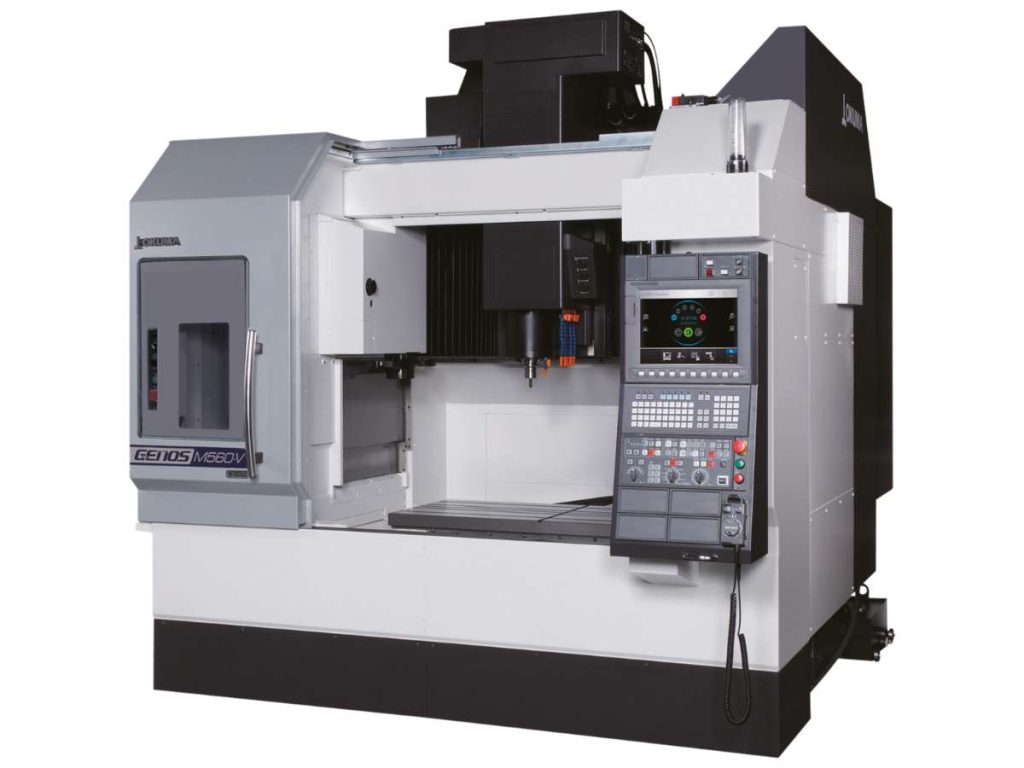
7. TRUMPF’s TruLaser 5030 fiber
When it comes to laser cutting technology, few machines rival the TRUMPF TruLaser 5030 Fiber. This high-speed fiber laser cutter is built for precision, efficiency, and maximum throughput, making it an ideal choice for high-production industries that require flawless, high-speed cutting on a variety of materials.
Specifications
- Laser Power: 6kW – 10kW fiber laser
- Cutting Area: 3000mm x 1500mm
- Max Cutting Speed: 140 m/min
- Material Compatibility: Mild steel, stainless steel, aluminum, copper, and brass
- Automation Options: Smart nozzle automation and BrightLine fiber technology
- Control System: TRUMPF Touchpoint HMI
Key Features
- Ultra-High Cutting Speeds: The 10kW fiber laser delivers unmatched cutting power, allowing for fast, precise, and clean cuts across various metals.
- Smart Nozzle Automation: Reduces downtime by automatically changing nozzles for optimized cutting conditions.
- BrightLine Fiber Technology: Enhances cut quality, ensuring smooth edges even in thick materials.
- Seamless Process Monitoring: Intelligent sensors detect inconsistencies in real time, preventing errors and increasing operational efficiency.
- Intuitive TRUMPF Touchpoint HMI: A user-friendly interface simplifies complex operations, making high-precision cutting easier and faster than ever.
Pros & Cons
Pros:
- Industry-Leading Cutting Speeds: Cuts thick and thin metals with unparalleled precision and efficiency.
- Low Operating Costs: Fiber laser technology reduces energy consumption while maximizing productivity.
- Advanced Automation & Monitoring: Minimizes errors, increases uptime, and improves cutting consistency.
Cons:
- High Investment Cost: Premium technology comes with a significant price tag.
- Requires Skilled Operators: Advanced features need proper training for maximum efficiency.
- Best for High-Volume Production: Smaller shops may not fully utilize its potential.
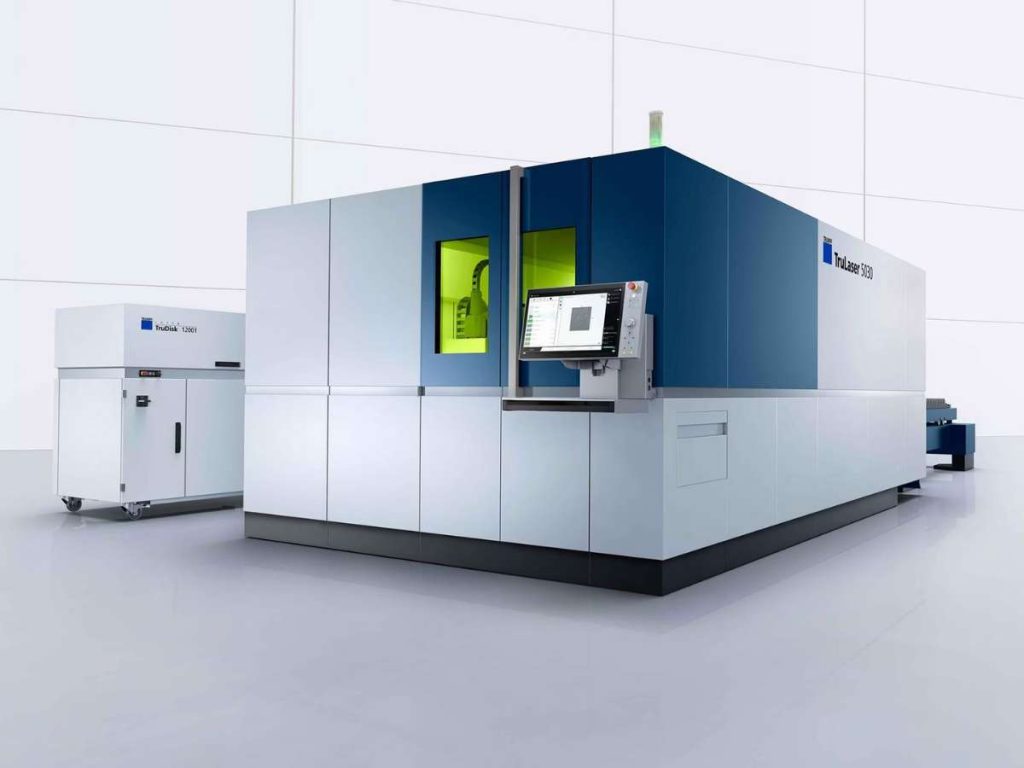
8. GROB-WERKE’s G350
The GROB-WERKE G350 is engineered for unrivaled accuracy, efficiency, and durability. With a unique horizontal spindle concept, optimized chip evacuation, and high-speed cutting technology, the G350 ensures flawless results in every machining cycle. If you’re looking for a machine that pushes the boundaries of precision engineering, the G350 is the answer.
Specifications
- Travel (X, Y, Z): 600mm x 855mm x 750mm
- Spindle Speed: 16,000 RPM (upgradable to 30,000 RPM)
- Spindle Power: 67 HP (50 kW)
- Tool Capacity: 30+ tools (expandable)
- Rapid Traverse Speed: 50 m/min
- Control System: Siemens 840D or Heidenhain TNC 640
Key Features
- Unique Horizontal Spindle Design: Provides optimal chip evacuation, reducing heat buildup and improving surface quality.
- Full 5-Axis Simultaneous Machining: Enables complex geometries to be machined with a single setup, improving accuracy and efficiency.
- Highly Rigid Structure: Built with cast-iron construction, minimizing vibration and ensuring stable, high-precision cuts.
- Advanced Cooling & Thermal Stability: Keeps temperatures consistent, eliminating thermal expansion issues that affect machining accuracy.
- Powerful CNC Control System: Choose between Siemens 840D or Heidenhain TNC 640, ensuring intuitive programming and automation capabilities.
Pros & Cons
Pros:
- Industry-Leading Precision: Ideal for aerospace, automotive, and medical machining, where micron-level tolerances are critical.
- Efficient Chip Evacuation: The horizontal spindle orientation reduces chip buildup, improves tool life and machining stability.
- Single-Setup Machining: Minimizes part handling, reducing errors and increasing operational efficiency.
Cons:
- High Initial Cost: Premium performance comes at a premium price, making it a major investment.
- Requires Skilled Operators: Advanced features need proper training to fully utilize its capabilities.
- Larger Footprint: The rigid and robust structure requires ample shop space for optimal operation.
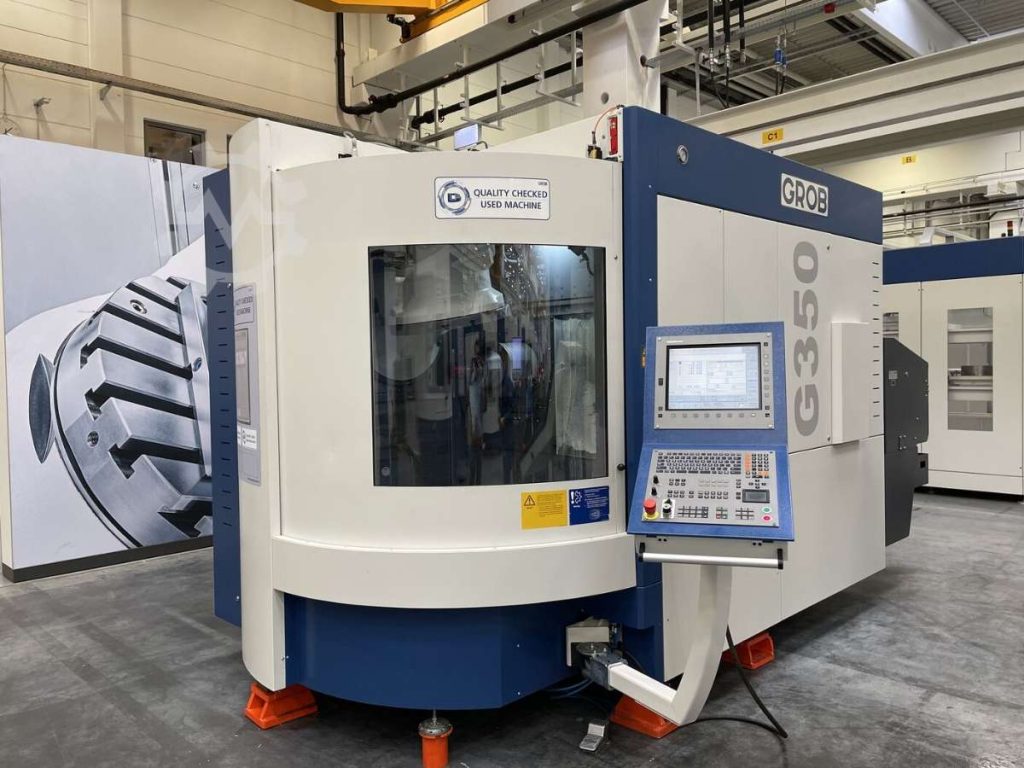
Conclusion
Remember that factory that lost thousands because of the wrong VMC? They learned the hard way. But you don’t have to.
You now have a complete breakdown of the 8 best VMC machines—each one tested, proven, and built for efficiency. The next step? Making a smart investment.
A VMC can make or break your production line. Choose wisely. Choose with confidence.
Your perfect VMC is just one decision away. Contact us today!
Recommended Reads for You
If you enjoyed this read, here are a few more articles packed with helpful information:
Still haven’t found what you’re looking for? Don’t hesitate to contact us. We’re available around the clock to assist you.


